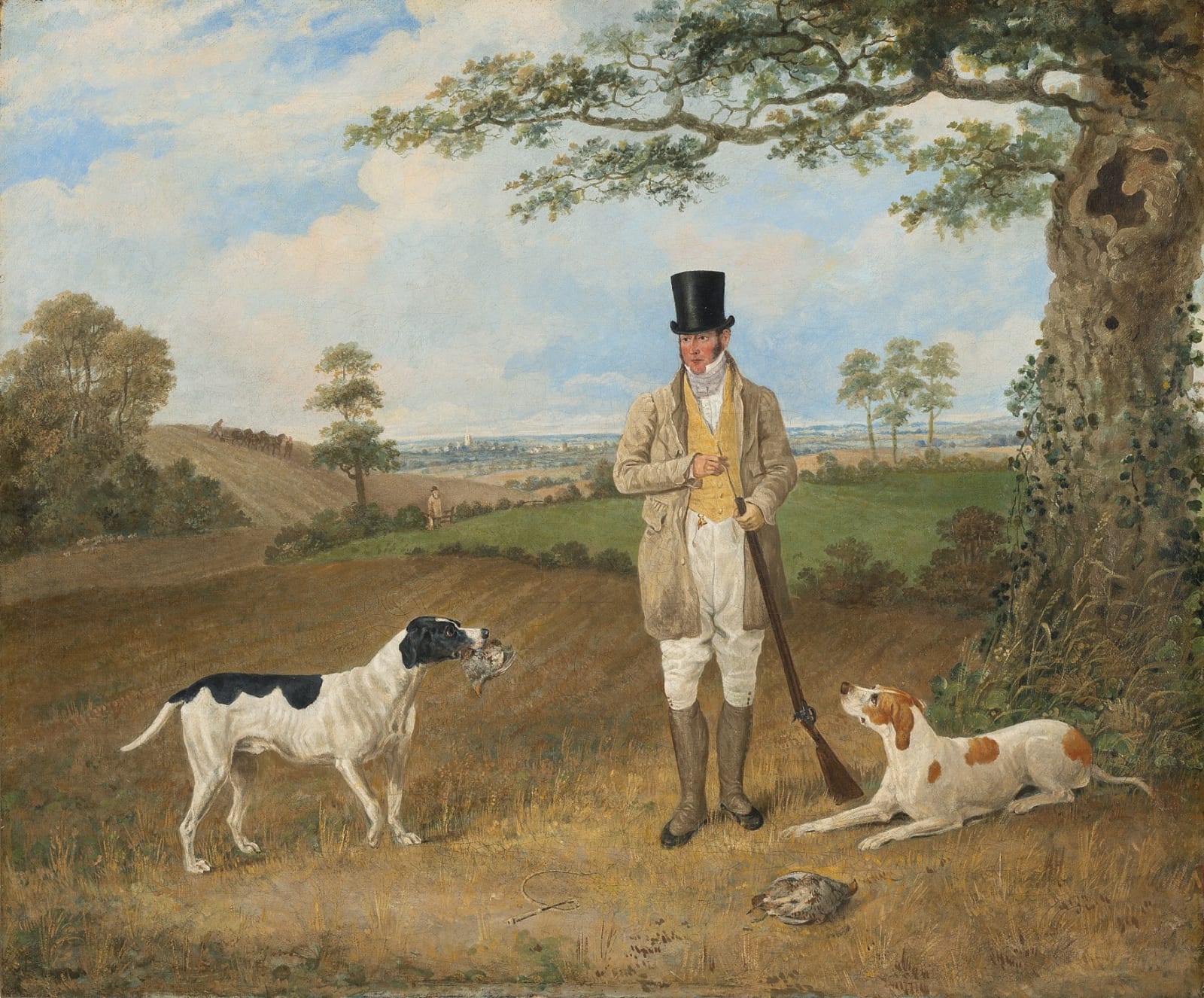Dean Wolstenholme Snr British, 1757-1837
Provenance
with Mallets, London.
Painted circa 1825
William Haslehust II was the son of the like-named William of Lee, Kent who married Ann Pugh on May 31st, 1756 in the village of Willey, Herefordshire. His eldest grandson, Ernest Haslehust RI RBA (1866-1910) was a noted landscape watercolourist and illustrator. William lived at Forest Gate in Essex, then a rural village on the outskirts of London, and was a prosperous merchant in the sugar trade. His company, Wm. Haslehust and Co. had offices in Mincing Lane in the City of London. Like many members of the burgeoning middle-class in the mid-19th Century, his life was divided between the office in the city and the minor rural squire in the Country. The present painting shows him out shooting partridge over cut corn, a scene familiar in early September throughout England, at a time when game was plentiful, and when ‘new men’ began to qualify under the onerous game laws to ‘shoot flying’. The gun he uses is a flintlock hammer gun, loaded in traditional manner with ramrod. A few years after this portrait the flintlock was replaced by the breach-loading shotgun which used nitro-caps instead of flints, and soon afterwards the modern cartridge. These guns were so much faster to handle that they transformed the nature of game shooting, and driven shooting virtually replaced shooting with pointers.
Dean Wolstenholme Senior is one of the more interesting sporting painters of the late Georgian and Regency Age. His fortunate position as the son of a wealthy land owner in Yorkshire afforded him the luxury of combining his talent as an artist with his love of country pursuits. An unfavourable outcome in a legal case concerning a property interest in Hertfordshire around 1793 forced Wolstenholme to focus his talent as a professional artist. It is interesting to note that his skills had previously been observed by Sir Joshua Reynolds who predicted that he would become a professional artist.
His talent soon surpassed many of his professional rivals, and his paintings were keenly sought after by sportsmen in the south of England. By 1803 he had moved to Hertfordshire from where he entered his first picture into the Royal Academy. In 1805 he moved to London where he continued to be a regular exhibitor at the RA until 1824. His keenness as a sportsman and skill as an artist endeared him to many of his clients, whom he met in the field where in took part in foxhunting, shooting and coursing. His lively depictions of these sporting scenes in Essex, Surrey and Sussex brought him into contact with Colonel Joliffe, a prominent sporting art collector and huntsman, who kept packs of hounds in these Counties. Their friendship was such that Joliffe presented the artist with an amusing stirrup cup.
His work is simple and direct and the compositions are highly coloured in a way which appealed to the sportsmen of their day. His paintings illustrate his understanding of both his subject and chosen medium, placing sportsmen and animals in carefully observed landscapes recording the pastimes of Gentlemen like Mr Haslehust at leisure – flattering yet accurate. This work relates closely to a comparative painting of a similar subject with identical handling of both the figures and the landscape. Many of his paintings were engraved and enjoyed widespread circulation throughout England.
